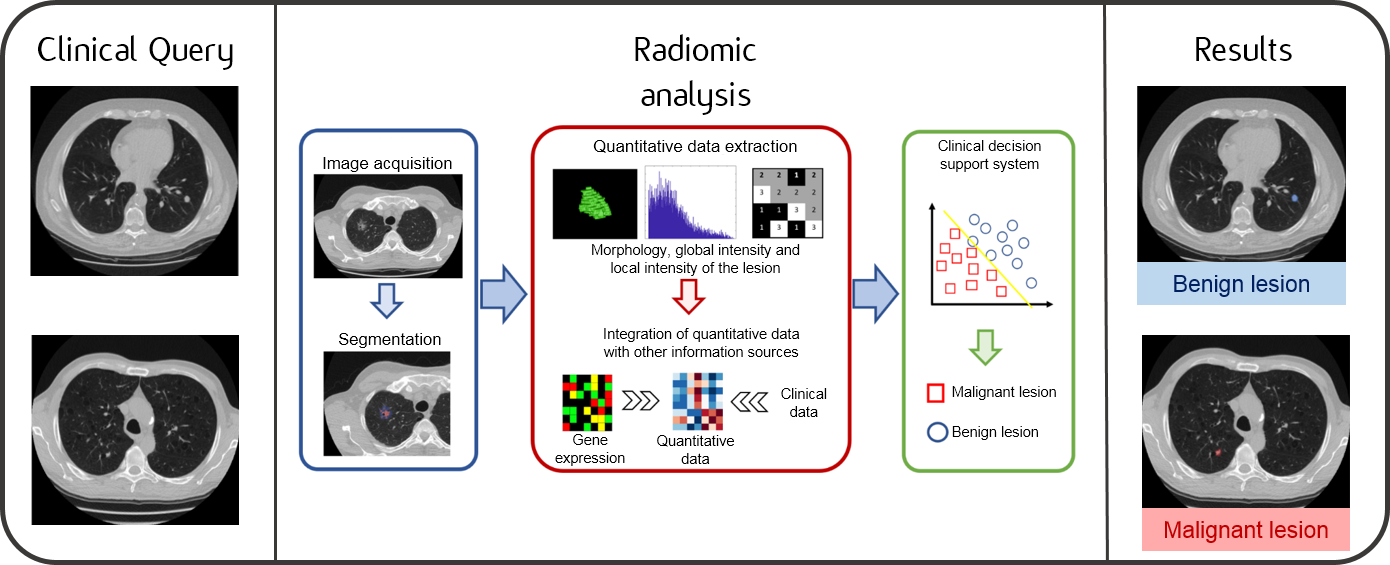A key goal of modern medicine is "precision medicine", the purpose of which is to personalise treatment based on the patient’s specific characteristics and his or her disease. Radiomics is rapidly emerging as a personalised medicine technology and is currently one of the most interesting fields of research.
To understand what Radiomics is, it is necessary to start by saying that some tumours are characterised by molecular alterations, such as genomic alterations. Given that it is possible to define these alterations, it is generally necessary to have a sample of the neoplastic tissue, which is obtained by biopsies or invasive surgical interventions. Currently, however, imaging diagnostics can enable tissues to be characterised in a non-invasive manner and, in some cases, can enable the profound phenotypic differences that human tissues present to be visualised. Since tumours are heterogeneous in their volume and change over time, diagnostic images can provide a full view of the entire tumour and can be repeated over time to monitor the changes induced by therapies.
Through Radiomics, the medical images we know, obtained by CT, MRI or PET scans, are converted into numerical data. They are calculated, in very large numbers, by special calculation tools and their handling and analysis often required the use of advanced techniques, such as artificial intelligence methods, in order to manage so-called “big data”.
This huge wealth of numerical data, which could not possibly be processed by means of simple visual observation, defines many characteristics of the tumour and the surrounding environment, related, for example, to its shape, volume and tissue structure.
Using these techniques, it is possible to study any correlation between the data obtained from the images and the molecular and genomic characteristics of the tumour, with the final aim of extracting indications - directly from the images - regarding the aggressiveness of the disease, regarding the most commonly indicated therapies and regarding its response to treatment.
It is hoped that, in the near future, the data collected from radiological imaging tests will be converted into quantitative data and that this data will be used as a decision-making support to clinical practice, in order to improve diagnostic accuracy and prognostic power.

Representation of the Radiomics process: quantitative parameters calculated from clinical images are analysed in combination with the patient’s biological, genetic and clinical characteristics. Thanks to the use of advanced techniques, it is possible to obtain useful information for diagnosis and for personalising treatment.